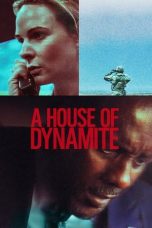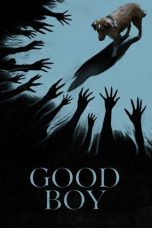22 July (2018) Movie Review – A Harrowing Depiction of Tragedy and Resilience
22 July (2018), directed by Paul Greengrass, is a sobering and powerful drama that recounts the horrific events of July 22, 2011, in Norway, where far-right extremist Anders Behring Breivik carried out a brutal terrorist attack, killing 77 people. The film provides a meticulous and respectful portrayal of the tragedy, focusing not only on the harrowing events but also on the aftermath, including the legal proceedings and the emotional and psychological recovery of the survivors and the nation. This review will explore the film’s plot, thematic depth, cinematic style, performances, and where to watch it online.
Plot Overview
22 July is divided into three distinct acts: the attack, the aftermath, and the trial. The film begins with the chilling sequence of events on July 22, 2011, when Anders Behring Breivik (played by Anders Danielsen Lie) sets off a bomb in Oslo’s government district before heading to the island of Utøya, where he opens fire on a youth camp organized by the Labour Party. The attack results in the death of 77 people, most of them teenagers.
The film then shifts focus to the aftermath of the attack, exploring the physical and emotional toll it takes on the survivors and their families. Central to this narrative is the story of Viljar Hanssen (Jonas Strand Gravli), a teenage boy who survives the attack but is left with life-threatening injuries. Viljar’s journey to recovery becomes a symbol of resilience and the will to survive in the face of unimaginable horror.
The final act of the film focuses on the trial of Anders Behring Breivik, highlighting the legal and moral challenges faced by the Norwegian judicial system in dealing with such an unprecedented act of violence. The film delves into the psychological aspects of Breivik’s ideology, as well as the broader implications of his actions for Norwegian society.
Themes and Character Dynamics
22 July is a film that explores several profound themes, including the impact of terrorism, the strength of the human spirit, and the principles of justice in the face of extremism. The film does not shy away from depicting the brutality of the attack, but its primary focus is on the aftermath—how individuals and a nation grapple with the consequences of such a devastating event.
The theme of resilience is central to the film, embodied by the character of Viljar Hanssen. His struggle to recover from his injuries and reclaim his life is portrayed with sensitivity and emotional depth, making his journey a poignant counterpoint to the violence and hatred that drove the attack. Viljar’s determination to testify against Breivik in court, despite his physical and emotional scars, serves as a powerful testament to the strength of the human spirit.
The film also delves into the theme of justice, examining how a society rooted in democratic values and human rights responds to an act of terror. The trial of Anders Behring Breivik is portrayed as a test of Norway’s legal system and its commitment to upholding the rule of law, even when confronted with the most heinous crimes. The film raises important questions about the nature of justice and the challenge of confronting extremism within the framework of a liberal democracy.
Cinematic Style and Direction
Paul Greengrass is known for his documentary-style filmmaking, and 22 July is no exception. The film’s realistic and unflinching portrayal of the events is achieved through a combination of handheld camera work, naturalistic performances, and a focus on detail that brings the audience into the heart of the tragedy. Greengrass’s direction is restrained yet powerful, allowing the gravity of the events to speak for themselves without resorting to sensationalism.
The cinematography by Pål Ulvik Rokseth complements Greengrass’s style, using a muted color palette and tight framing to create a sense of immediacy and intimacy. The film’s visual approach is both immersive and respectful, capturing the raw emotions of the characters while maintaining a sense of dignity and solemnity.
The pacing of the film is deliberate, reflecting the long and difficult process of recovery and justice. The first act, depicting the attack, is intense and harrowing, but the film then shifts to a slower, more reflective pace as it explores the aftermath and the trial. This structure allows the film to explore the full impact of the tragedy, from the immediate horror to the long-term consequences.
Performances
The performances in 22 July are uniformly strong, with the cast delivering emotionally resonant portrayals that capture the complexity of the characters’ experiences. Anders Danielsen Lie gives a chilling performance as Anders Behring Breivik, portraying the character with a cold, detached demeanor that is both disturbing and compelling. Lie’s portrayal avoids caricature, instead offering a nuanced depiction of a man driven by a twisted ideology.
Jonas Strand Gravli is outstanding as Viljar Hanssen, delivering a performance that is both vulnerable and powerful. Gravli captures Viljar’s physical and emotional pain with authenticity, making his journey of recovery deeply moving. His portrayal of Viljar’s determination to confront Breivik in court is one of the film’s most powerful moments.
The supporting cast, including Isak Bakli Aglen as Viljar’s brother, Torje, and Seda Witt as their mother, Christin, also delivers strong performances, adding depth to the film’s exploration of the family’s ordeal. Thorbjørn Harr as Geir Lippestad, Breivik’s defense attorney, provides a compelling portrayal of a man grappling with the moral complexities of defending a mass murderer.
Critical Reception and Impact
22 July received critical acclaim for its respectful and thorough portrayal of the 2011 Norway attacks and their aftermath. Critics praised the film for its focus on the human aspects of the tragedy, as well as for its exploration of the broader social and political implications of the event. Greengrass’s direction and the performances, particularly those of Jonas Strand Gravli and Anders Danielsen Lie, were widely lauded.
The film’s impact lies in its ability to convey the resilience of the survivors and the strength of a society that refuses to be defined by hatred and violence. 22 July is a powerful reminder of the importance of justice, democracy, and the human capacity for healing and forgiveness.
Where to Watch 22 July (2018) Online
For those interested in watching this harrowing yet inspiring drama, 22 July is available on several streaming platforms and rental services:
- Netflix: 22 July is available for streaming on Netflix, making it easily accessible to subscribers. This platform offers the film in high definition, with subtitles in multiple languages.
- Amazon Prime Video: While not included in the standard Prime subscription, 22 July can be rented or purchased on Amazon Prime Video. Rental prices typically start at $3.99, with purchase options available for around $12.99.
- Apple TV: The film is also available for rent or purchase through Apple TV, with similar pricing to Amazon. This option offers high-definition streaming and compatibility with a wide range of devices.
- Google Play Movies & TV: 22 July can be rented or purchased on Google Play Movies & TV, providing flexibility for viewers who prefer streaming on various devices.
- YouTube Movies: The film is accessible on YouTube Movies for rent or purchase, offering another convenient option for streaming.
Final Verdict
22 July is a powerful and important film that offers a respectful and insightful portrayal of one of the darkest days in modern European history. With its focus on the resilience of the survivors, the pursuit of justice, and the broader implications of extremism, the film stands out as a significant and thought-provoking work.
For viewers interested in films that explore real-life events with emotional depth and thematic complexity, 22 July is a must-watch. Its availability on multiple streaming platforms ensures that audiences can easily access this harrowing and ultimately uplifting story of tragedy and resilience.
















